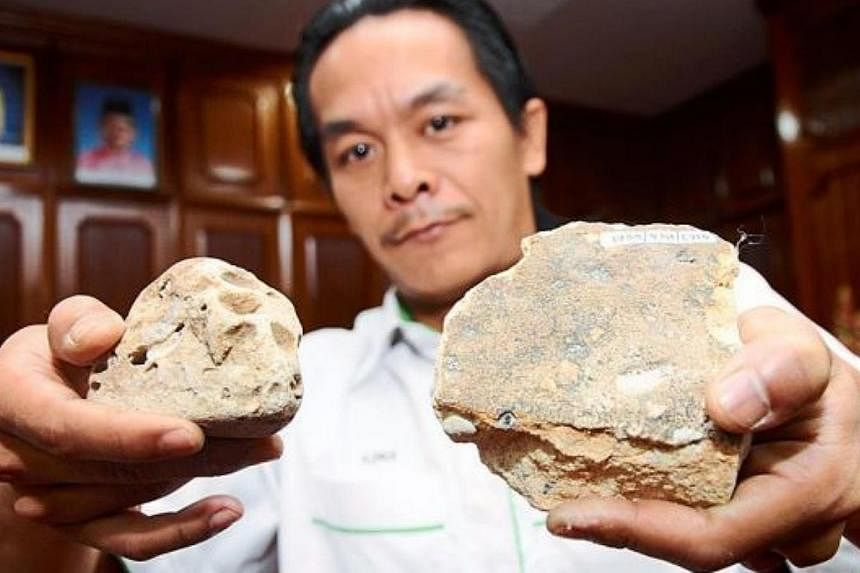KUALA TERENGGANU (THE STAR/ASIA NEWS NETWORK) - Scientists and geologists who trekked a mountain in upper Terengganu have discovered what they believe to be fossils of three different types of dinosaurs that may have lived in the area 66 million years ago or earlier.
The fossils are said to be unrelated to those found earlier in Pahang by a University of Malaya's research team, including an announcement last Thursday that they had discovered a fossil tooth of what is believed to be a herbivorous dinosaur in a sedimentary rock formation.
The specimen was found not far from the location of where the first dinosaur fossil was discovered and announced in February as that of the carnivorous Spinosauridae dinosaur.
The exact location of the Pahang discoveries was not disclosed to prevent raiders from entering the site.
The discoveries in Terengganu came during a 10-day expedition at Mount Gagau carried out by the mineral and geoscience department and the Malaysian Geological Heritage Group on Oct 13.
"They are significant findings that will lead to even more dinosaur fossil discoveries," said department director-general Yunus Abdul Razak at the unveiling of the fossils at Wisma Darul Iman here on Sunday.
He said the fossils found at the mountain in Hulu Terengganu were unrelated to the ones discovered in Pahang and were also from different dinosaur species.
"Also, the fossils that we found were more intact, " he said.
The fossils, which consisted of several footprints, bones and teeth, were possibly of three different dinosaur species.
A tooth, measuring about 1.5cm in length, and two footprints which were found at some rock boulders are believed to be of the Iguanodon dinosaur species.
Two other different footprints were also found, believed to be that of dinosaurs of the theropod and sauropod families.
The dinosaur bones that were unearthed from a rock outcrop have yet to be identified.
The Iguanodon dinosaurs were large, bulky herbivores, known for their spiked thumbs and iguana-like teeth.
They lived in the late Jurassic period to the late Cretaceous period, which is about 163 million to 66 million years ago.
Fossils of the Iguanodon were previously found in Korat, Thailand.
Sauropods were enormous plant-eating dinosaurs with long necks, similar to the giraffe, while theropods were primarily carnivorous dinosaurs.
Yunus said the next step was to find the best way to preserve the discovery site.
This, he said, was in order to prevent it from being damaged by unscrupulous parties.
"We will have a discussion with the forestry department as well as the wildlife and national parks department on how to protect this area," he said.
As early as the 1970s, Mount Gagau, at the Kenyir Lake national park, was identified to have fossilised remains in its hills.
Chief minister Ahmad Razif Abd Rahman said the discovery was "a proud moment for the people of Terengganu."
"This will also provide added value for gazetting the Kenyir lake area into a geopark," he said.

